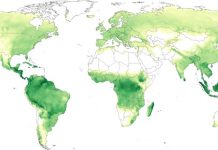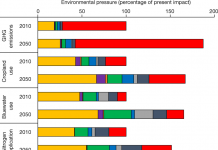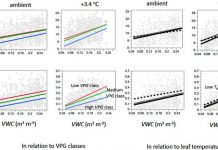【长期免耕对土壤有机碳和土壤性质的影响】Sandeep Kumar Atsunobu Kadono Rattan Lal and Warren Dick. Long-Term No-Till Impacts on Organic Carbon and Properties of Two Contrasting Soils and Corn Yields in Ohio. SSSAJ Vol. 76 No. 5 p. 1798-1809
Abstract
Tillage influence on soil properties and crop productivity depends on soil crop climate and duration. Two long-term experimental sites with contrasting soils were selected to assess the influence of no-till (NT) minimum tillage (MT) and plow tillage (PT) under continuous corn (Zea mays L.) and corn–soybean [Glycine max (L.) Merr.] (CS) rotations on soil organic C (SOC) stock bulk density (ρb) water-stable aggregation (WSA) aggregate tensile strength penetration resistance available water capacity (AWC) and corn yield. Experiments began in 1962 in northeast Ohio on a well-drained silt loam soil and in 1964 in northwest Ohio on a poorly drained clay loam soil. Results were compared with soil under an adjacent undisturbed woodlot (WL). The WL soils had the highest SOC content and stock. In the cultivated silt loam soil stock was higher under NT (20.7 Mg ha−1) followed by MT (17.3 Mg ha−1) and PT (16.8 Mg ha−1) for the 0- to 10-cm depth. Soil ρb for this depth was lower under NT by 8 and 3% than PT and MT respectively. The percentage of total WSA >2000 μm in soil under NT (47%) was significantly higher than under MT (38%) or PT (34%). A similar trend was observed for the clay loam soil. Rotation also influenced soil properties. Corn yields were higher (3 yr) and lower (1 yr) during 5 yr for the silt loam soil under PT than NT and unaffected or slightly higher under NT for the clay loam soil. Long-term (47–49 yr) use of NT practices are highly sustainable and result in higher SOC and WSA lower ρb and greater AWC content than MT or PT.
【有机氮肥增强相对尿素施用的氮转化、氨挥发损失和硝态氮淋湿】U. Singh J. Sanabria E.R. Austin and S. Agyin-Birikorang. Nitrogen Transformation Ammonia Volatilization Loss and Nitrate Leaching in Organically Enhanced Nitrogen Fertilizers Relative to Urea. SSSAJ Vol. 76 No. 5 p. 1842-1854
Abstract
New N fertilizer products—organically enhanced NS plus and organically enhanced NS plus with Fe manufactured by using sterilized and chemically converted organic additives extracted from municipal wastewater biosolids were evaluated for N mineralization ammonia (NH3–N) volatilization N leaching and effects on soil acidification relative to urea. Laboratory incubations at three temperatures (20 30 and 40°C) two leaching schemes (continuous and intermittent irrigation regimes) and ammonia volatilization experiments under aerobic (upland) and anaerobic (flooded) conditions were conducted in four appropriate soils (Greenville loam [fine kaolinitic thermic Rhodic Kandiudults] Lakeland sand [thermic coated Typic Quartzipsamments] Guthrie silty-clay [fine-silty siliceous thermic Typic Fragiauults] and Sumter clay [fine-silty carbon







